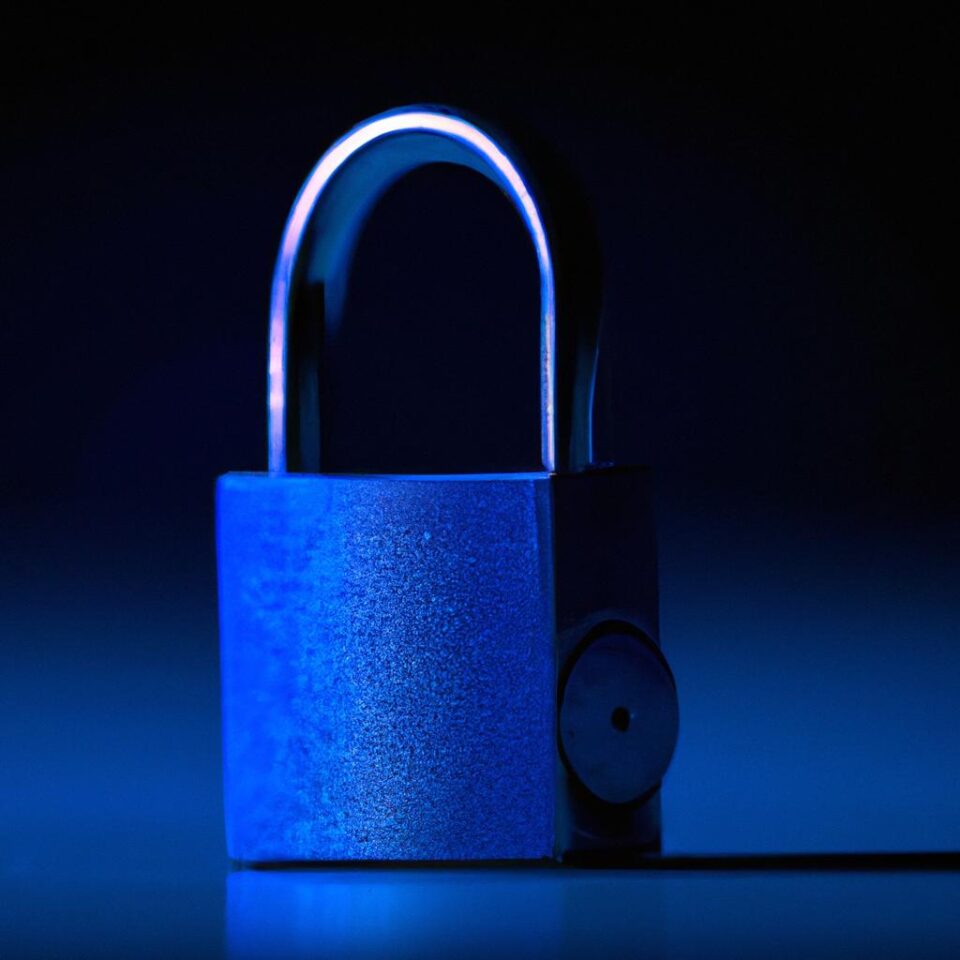Introduction: Protecting Your Company’s Digital Assets
Cybersecurity is a crucial part of any effective business strategy. As digital threats become more sophisticated and malicious actors become bolder, it is critical that businesses take the necessary steps to protect their valuable digital assets. From customer data to confidential files, companies must ensure that their digital information is safe and secure. Understanding the risks posed by digital threats and implementing best practices for cybersecurity will help to ensure that your business’s information is safe and secure.
This guide will provide an overview of the importance of cybersecurity for businesses and offer advice on how to protect your company’s digital assets. We will cover the various types of digital assets, assess risks, develop a cybersecurity plan, create protocols for protection, establish methods for data encryption, conduct internal audits and tests, develop user education, and create a disaster recovery plan.
Understanding Digital Assets
Digital assets are anything that your business has which is stored and managed digitally. These might be documents, spreadsheets, images, videos, audio files, databases, code or any other kind of digital file. They can also include customer data, such as names, addresses, contact information, or financial details.
The types of digital assets a business might have vary. For example, some businesses may only store simple documents while others may have complex databases and applications they need to protect. No matter what type of digital assets a business has, it is important to protect them from cyber threats.
Businesses should consider the value of their digital assets and what kind of damage could be done if they were to fall into the wrong hands. Not only could data be stolen or corrupted, but customer trust could be lost, legal action could be taken, and the company’s reputation could be tarnished. For these reasons, it is important to protect digital assets and keep them secure.
Assessing Risks
When it comes to cybersecurity for businesses, it is important to take the time to assess potential risks. Companies have digital assets such as customer records, financial documents, proprietary technology and more that can be targeted by malicious actors. Knowing what types of threats face your organization is essential in order to take the right steps towards protecting it from harm.
Threat vectors are specific sources of danger. They can come from human error, malware, phishing scams, ransomware, or a variety of other sources. Once threat vectors have been identified, it is possible to determine what security measures are necessary to protect digital assets. This includes understanding existing security controls as well as evaluating what additional ones may be necessary.
Developing a Cybersecurity Plan
Having an effective cybersecurity plan in place is key to protecting your business from digital threats. A comprehensive plan should cover both the prevention of attacks and the response to potential incidents.
An effective cybersecurity plan should include the following basic steps:
- Identifying all digital assets.
- Assessing security risks that could affect these assets.
- Developing policies to protect digital assets and ensure access control.
- Implementing data encryption protocols.
- Conducting regular internal audits and tests.
- Establishing extra layers of protection, such as network hardening.
- Providing user education on security protocols and best practices for handling sensitive information.
- Creating a comprehensive disaster recovery plan.
- Exploring third-party security services which can help minimize risks to digital assets.
By following these steps, businesses can ensure they are taking the necessary precautions to protect their digital assets.
Cybersecurity Protocols
Organizations need to implement policies to ensure their digital assets are secure and access is controlled. Cybersecurity protocols are a set of rules, guidelines and instructions that lay down the basics of how data should be managed and redirected. These policies will also identify who is responsible for compliance with the protocol.
It is important to ensure that the protocols are comprehensive, taking into account all potential vulnerabilities and threats. This involves keeping up to date with all the latest industry developments, so the organization knows the best policies to implement. Furthermore, it is essential to regularly review and update the cybersecurity protocols, as technology and threats are ever-evolving.
The following steps should be taken when creating or updating cybersecurity protocols:
- Identifying assets and listing their liabilities;
- Developing security protocols based on threat levels;
- Establishing access protocols and authentication measures;
- Educating employees about the use of digital assets and how to spot malicious activity;
- Monitoring networks and user accounts for suspicious activity;
- Exploring third-party security services;
- Creating a disaster recovery plan in case of a breach;
- Conducting regular audits;
- Updating software regularly.
By investing the time and resources into creating a comprehensive security plan, businesses can help protect their digital assets and reduce the risk of cybercrime. It is essential to get into the habit of regularly reviewing existing protocols and making sure they are up-to-date. With the right knowledge and an effective approach, businesses can keep their digital assets safe.
Data Encryption
Data encryption is an important part of protecting digital assets from external threats. It is the process of transforming data into a code that cannot be deciphered easily. By encrypting important data, businesses can ensure that only authorized people have access to it and protect it from potential cyber-attacks.
What makes data encryption so important is that it prevents malicious actors from taking advantage of any vulnerabilities in the system. Even if someone was able to gain access to the data, it would not be readable without the key used to encrypt it. Therefore, data encryption is critical for ensuring the safety of confidential information.
There are many different types of encryption methods available. The most common type is symmetric encryption, which uses a single key to both encrypt and decrypt data. Asymmetric encryption, on the other hand, uses two keys – one for encryption and another for decryption.
Data encryption is an important step in protecting your digital assets and should be considered as part of any comprehensive security plan. With the right tools and policies in place, companies can ensure that their data is secure and protected from external threats.
Cybersecurity Audits
Performing regular cybersecurity audits is a vital component in protecting a business’s digital assets. Cybersecurity audits involve conducting internal tests to monitor the health of the system and ensure that data is being stored securely. Regular security audits offer multiple benefits, including:
- Identifying weaknesses in the system and ensuring that any vulnerabilities are patched
- Ensuring that all necessary security protocols are implemented and followed
- Testing the network for any potential threats or malicious activities
- Evaluating the security of data and access controls
- Detecting any suspicious or unauthorized activity
It is important to regularly conduct these audits in order to ensure the safety and integrity of data and networks. This can be done manually, through the use of automated security software, or by hiring an external security services provider.
Network Hardening
Securing networks is essential for protecting businesses’ digital assets. Network hardening is the process of adding additional layers of protection to networks and user accounts. This involves limiting access to certain authorized people with particular credentials and implementing network protocols.
- Restrict access: Establish rules on who has access to the data, and provide authentication credentials to ensure only authorized users can access it. These credentials could include passwords, biometric scanning, or two-factor authentication.
- Implement network protocols: Make sure that all devices in your network use the same standard protocols, such as Transport Layer Security (TLS). This will help protect against any malicious actors trying to breach your system.
- Strengthen passwords: It is essential to have strong passwords. Use a combination of letters, numbers, and symbols to make sure your passwords are secure.
These are just a few potential ways to harden networks and user accounts. However, it’s important to remember that these methods may not be enough to protect against all threats, so it is essential to have a comprehensive cybersecurity plan.
User Education
As cyber threats become more sophisticated, it’s essential that companies empower their employees with the knowledge and training to properly handle confidential data. Companies can achieve this by investing in high quality user education. This includes teaching employees the basics such as avoiding suspicious emails, websites or links, creating secure passwords, understanding social engineering techniques, avoiding public Wi-Fis, etc. Additionally, employees should be trained on best practices for handling confidential data, such as regularly backing up important documents and encrypting data before transmitting it over the internet.
Moreover, employers can help create an atmosphere of trust and security by regularly discussing and reinforcing their company’s cybersecurity policies with their employees. This can be done through emails, notices, or even one-on-one conversations. Employees should also be made aware of any tips, tools, or software that can be used to better protect their work.
Disaster Recovery Plan
No matter how advanced your security measures are, the unthinkable might happen and a cyber attack may cause damage to your system. This is why it is absolutely essential that businesses have an effective disaster recovery plan in place, in case of a breach. A good disaster recovery plan should include well thought out steps on how to respond to and cope with the situation. It should include backup strategies, data recovery techniques, strategies for minimizing data loss and instructions on how to patch up any security gaps that led to the attack. By having a comprehensive disaster recovery plan, you can be sure that your business is prepared for any digital disaster that comes its way.
Third-party Security Services:
Cybersecurity is a major priority for businesses in today’s digital world, and protecting valuable digital assets requires more than just the basics. Utilizing third-party security services can help companies minimize their risks, and better protect vital information.
Third-party security services offer a wide range of solutions, from managed security services to cloud security, network penetration testing to penetration defense. Depending on a business’ budget and needs, there are a variety of services available to help them better protect their digital assets.
Using these services can help a business detect and prevent potential threats to their systems in different ways. For example, managed security services can help detect potential threats and provide real-time system monitoring for suspicious activity. Additionally, cloud security can help secure data stored within the cloud, as well as protect against external threats. Network penetration testing helps identify potential weaknesses or vulnerabilities in the network, while penetration defense helps defend against those identified risks.
Third-party security services are an important part of any comprehensive cybersecurity plan. When evaluating options for third-party services, businesses should consider their budget, the types of services they need, and how those services will fit into their overall security strategy.
Conclusion
Businesses must take cybersecurity seriously in order to effectively protect their digital assets. Cybersecurity threats pose a real danger, but with the right plan in place and up-to-date security protocols, businesses can greatly reduce their risk of becoming a victim of cybercrime. It is important to assess the risks to your digital assets, regularly audit and test systems, and ensure that users are trained on the basics of cybersecurity.
Additionally, businesses should consider incorporating advanced security controls such as data encryption and network hardening techniques. In the event of a breach, having a comprehensive disaster recovery plan can help minimize damage and reduce the time needed to recover. Third-party security services can also help monitor for threats and provide additional protection.
In conclusion, businesses should make sure they take all necessary steps to protect their digital assets from potential threats. By implementing a comprehensive cybersecurity plan and staying up to date on the latest best practices, businesses can ensure their digital assets remain safe and secure.

